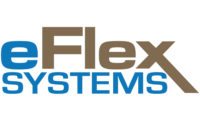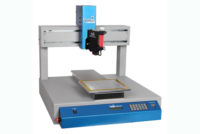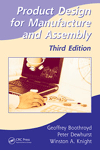Sometimes, a new supplier of assembly technology is created by an OEM when it can’t seem to find existing technology to meet its needs.
For example, EPSON Robots was originally established by Japanese OEM Seiko Epson Corp. to satisfy internal demand to automate handling and assembly of small parts for watches, printers and other products. DENSO Robotics emerged in much the same way from Japanese automotive supplier DENSO Corp.
Here in North America, software provider Visual Knowledge Share Ltd. (VKS) was born when Canadian engineering and manufacturing firm CMP Advanced Mechanical Solutions needed a way to increase plant productivity, reduce defects and better train workers. Founded in Châteauguay, Quebec, in 1969, CMP manufactures parts, sheet metal enclosures and electromechanical assemblies for variety of products, including medical devices, trains, industrial equipment and self-service kiosks. Today, the high-mix, low-volume manufacturer employs more than 400 people at facilities in Quebec and Binghamton, NY.
Assembling complex products for a wide array of industries, CMP learned early on how challenging their operations could be. With some jobs repeating every week, and others only every six months, it became difficult to remain effective. How could operators remember the setup information for a specific job on a specific machine? How could they maintain high levels of productivity on a complex assembly that they may never have seen before? How could assemblers know what quality standards are required when they may process dozens of different jobs for different customers in the same day?
To solve the problem, CMP engineers developed software, Visual Knowledge Share, for creating digital work instructions. The software enables engineers to create visual work instructions and share them with the people who need to know. Instructions can include videos, pictures, text, tables, annotations, forms, alerts and other features.
Instructions can be created on a PC, laptop, tablet or smartphone—anything that can run a modern browser. Similarly, those instructions can be accessed from any such device. Instructions can be stored using VKS’s cloud-based service or on a company server. Either way, engineers can control who and where access is allowed.
“Our software allows you to show operators how to set up a machine, what to watch out for, what to inspect, how to assemble parts, and what sequence to follow,” explains Ryan Zimmermann, director of business development at VKS. “That way, the next time that part comes through, an operator can simply scan a bar code and view pictures and video showing exactly what he has to do.”
Originally implemented in 2012, the software helped CMP dramatically reduce defects and achieve a 20 percent gain in productivity across its operation. The software was so successful, CMP created a subsidiary, VKS, to market the product to other manufacturers.
The software has evolved substantially since 2012. Today, the software is available in three packages: Light, Professional and Enterprise. Light is dedicated strictly to creating and sharing work instructions. It can be used on its own or as an add-on to a manufacturing execution system (MES). The Professional package includes the work instruction software and most of the features of a standard MES. The Enterprise package has all of the features of the Professional package, as well as an application program interface for communicating with enterprise resource planning (ERP) software. With the interface, the VKS software will be able to pull in work order information from an ERP, execute the tasks to plan, and then push the results back to the ERP. The VKS software will be able to tell an ERP system that an order has been completed, how long it took to set up, and how long it took to run.
The software’s ToolConnect feature links with machines and tools so work instructions advance automatically as each step is performed. Thus, each time an assembler sets a rivet, tightens a bolt, or spot-welds a part, the tool or machine will signal the software to show the next step in the assembly process.
Earlier this year, VKS added functionality that takes that feature one step further. Now, instead of simply receiving a signal from a tool that a bolt has been tightened, the software can collect and store torque and angle data, as well. That data can be associated with the serial number of the assembly, and it can also be viewed collectively in reports.
“At the end of a production run, you’ll be able to see how long the operator took, how productive they were, how efficient,” says Zimmermann. “You’ll also be able to see all the quality data.”
For more information on visual work instructions, call 855-201-4656 or visit www.vksapp.com.








